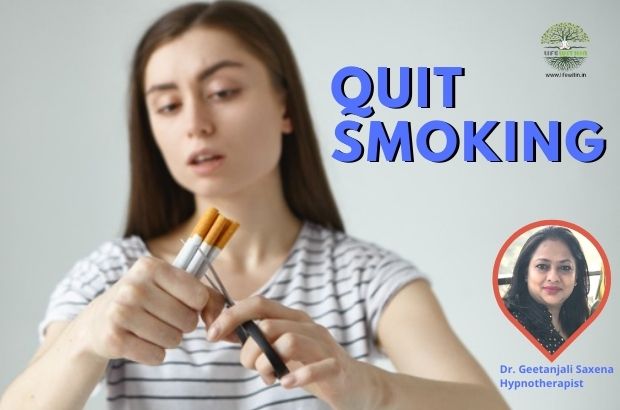How To Deal With Depression During Coronavirus Time? | Dr Prameela Sreemangalam
- Nov 19, 2020
- 1319 View
Wellness Wonders: Become the Choreographer of your own Life | Dr. Mickey Mehta
- Nov 19, 2020
- 934 View
Vikram a chain smoker from the past 15 years had tried a lot ways to quit his addiction, but every time he would go back...

Vikram a chain smoker from the past 15 years had tried a lot ways to quit his addiction, but every time he would go back to his habit, once he met Dr Geetanjali he was able to quit smoking cold turkey and it’s been 3 years he hasn’t felt the need to smoke.
Krish a 19 year old college student was addicted to smoking cigarettes, and felt the need to quit and was introduced to Dr Geetanjali by his aunt and after 2 sessions he would regularly update us on how he is not feeling the need to smoke even though his friends around him are smoking.
These above are just two of many such miraculous case studies of the people who have benefitted from Hypnotherapy which is marvellous collaboration between the client and the hypnotherapist.
The client tells the healer what they need to figure on – and therefore the healer then takes (or induces) the client into a state of hypnosis. Usually this is done through a guided relaxation meditation for the mind and body as the client continues to focus more and more intently on the voice of the hypnotherapist. When the hypnotherapist is glad that the client is in psychological state he then introduces powerful suggestions and visualizations into the centred mind of the consumer – rigorously crafted so the consumer can do their stated goals.
Addictions = habits = conditioned reflexes
A habit is solely an automatic manner of responding to a given stimulant – an automatic reflex.
ALWAYS a reduction in stress, anxiety, emotional distress, agitation or boredom/restlessness – and a consequent feeling of relief. Typically a positive experience becomes associated with a particular action; this is nearly Rather than lowering of stress, pleasure is the dominant associated emotion.
Negative activity habits are nearly perpetually related to lowering stress (self-soothing) and/or pleasure.
Triggers for negative habitual behaviour are usually agitation, boredom, uneasiness, and emotional distress, gentle or medium levels of tension or stress – or generally merely not obtaining enough pleasure and satisfaction from alternative areas of our life.
The subconscious is programmed by society to grasp that the employment of tobacco (smoking or chewing it) is not healthy and is undesirable behaviour; therefore, it accepts the fact that the use of tobacco is a disorder.
So, the way to quit smoking with the assistance of hypnotherapy?
While the client is in a very hypnotic state, the therapist programs the client & subconscious mind to automatically link anything the client does which perpetuates this disorder (use of tobacco) to the clients’ past emotional feelings of sadness.
For example, a client may have experienced sadness as a child when his puppy away from home.
The act of perpetuating the client’s disorder (smoking a cigarette) causes the client to feel as sad as he was once he was a toddler, and his puppy dog ran away from home.
The client to change his behaviour is the result of this method.
The act of smoking a cigarette or chew tobacco no longer is a pleasure for the client.
Indeed, it brings on a gentle state of unhappiness which may solely be corrected once the consumer chooses to prevent the behaviour that perpetuates his disorder (smoking or chewing tobacco).
Even you can quit smoking and live your life to the fullest, do you want to try hypnosis as a therapy option? Hypnosis helps to kick your cravings, all of which can help you curb your habit.
Dr Geetanjali has helped over 1000 of her clients quit smoking in a mere 2-3 sessions.
__________________________
By: Dr. Geetanjali Saxena
Spiritual Healer | Hypnotherapiest

